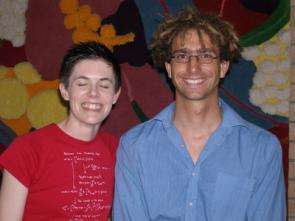Ig Nobel 2006 Prize in mathematics

The 2006 Ig Nobel Prize in mathematics was awarded to Dr Piers Barnes and Ms Nic Svenson of CSIRO for figuring out how many photographs to take of a group of people to be confident of getting at least one where no-one’s blinking.
CSIRO’s laureates accepted their prize (described by the international science journal Nature as “no cash, but much cachet”) at the traditionally unorthodox ceremony at Harvard University in Boston last night.
“We are proud to have made a gross simplification of complex physiological and psychological factors backed up with no empirical data,” physicist Dr Barnes said.
“Like many other theories, if enough assumptions are made, we are confident that our expression holds,” he said.
For the record: for groups of less than 20, you divide the number of people by three if there’s good light or a decent flash, and two if the light’s bad.
The Sixteenth First Annual [sic] Ig Nobel prizes honour research that first makes people laugh, and then makes them think.
“CSIRO has an ongoing responsibility to help inspire and educate about science,” said writer and sometime photographer Ms Svenson.
“It’s like Isaac Asimov said: ‘The most exciting phrase to hear in science is not 'Eureka!' but 'That's funny...’,” she said.
Source: CSIRO





















